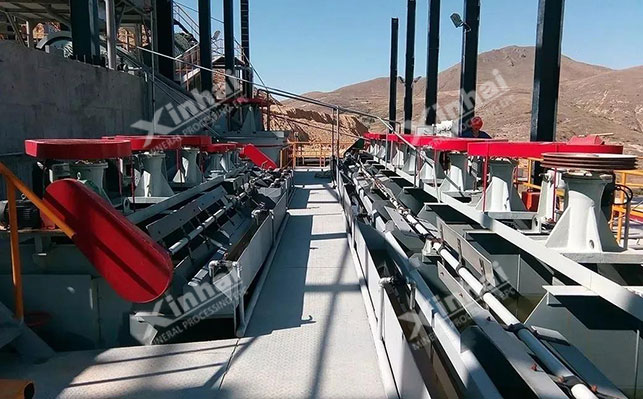The magnetic separation process is mostly used for iron ore dressing, but for iron ores with very fine embedded particle size, it is difficult for a single magnetic separation to make the concentrate recovery reach the qualified standard, so the combined magnetic separation flotation process is often used. Do you know why the recovery rate still does not reach the standard after the magnetic separation flotation combined process is used to select other iron concentrates? In fact, the iron ore flotation recovery is often affected by three factors, namely, the type of iron ore, the flotation environment and flotation reagents.

There are many and complex types of iron ores. At present, the industrial raw iron ores that can be used include magnetite, hematite, pyrrhotite, ilmenite, etc. Because of the large differences in the floatability of these iron ores, the selection of flotation types is affected. Among iron ores, hematite, pseudohematite, limonite and siderite have better floatability. The hematite with coarse particle size is usually treated by reverse flotation, while the hematite with fine particle size can be floated out by positive flotation.
The floatability of pseudo hematite is slightly worse than that of hematite, but both positive and negative flotation processes can be used to treat pseudo hematite. Siderite is similar to pseudo hematite in floatability and can be used in both positive and negative flotation.
For magnetite with poor floatability, reverse flotation is generally used to float gangue minerals in iron concentrate, which can greatly reduce the impurity content in the concentrate.
The iron oxide mineral containing water is troublesome because it is hydrophilic, soft and easy to mud. The process used is different for different kinds of minerals. It depends on the nature of the ore itself.
The flotation environment here mainly refers to the change of PH value. Different iron ores have different requirements for PH value, and different PH will also affect the recovery rate.
Hematite and pseudo hematite have strict requirements on the PH value. Too high or too low will cause the recovery rate to fluctuate. The appropriate PH value range for hematite is 6.5~7.5, while the appropriate PH value range for pseudo hematite is 7~8. Under different acid-base environments, the selection of flotation process for siderite will change. In strong alkaline environments, cationic collectors can be selected for flotation of siderite, and in neutral media, anionic collectors can be used for collection.
In terms of reagents, common flotation reagents for iron ores include cationic collectors, anionic collectors, inhibitors, etc. Among them, cationic collectors often use ether amine collectors to collect quartz and silicate in iron ores. Because these agents are relatively simple, have low requirements for water quality, and can withstand low temperatures, they are often used in flotation of iron ores. There are many kinds of agents, including amine oxide, coconut oil primary amine, soybean oil amine, etc.
Anionic collectors used to collect iron minerals include fatty acids, fatty acid soaps, sulfated soaps, etc. Relatively speaking, the selectivity is not as good as that of cationic collectors, and the requirements for PH value are relatively strict. It often requires the cooperation of inhibitors to suppress gangue minerals. When anionic positive flotation is carried out, the activator should also be selected according to different ore properties. The common activator here is calcium oxide, which can enable iron silicate minerals to be floated by organic acid. The common inhibitor used for iron ore is starch, and the specific use of the agent shall be determined according to the test after the ore properties are verified.
The above are some influencing factors of iron ore flotation. In combination with the above analysis, we can find that due to the complexity of iron ore properties, different ore types have different processing methods. In the actual application and production of each mine owner, it is also necessary to select the corresponding process flow according to the test results after the completion of the test, so as to achieve good recovery results.